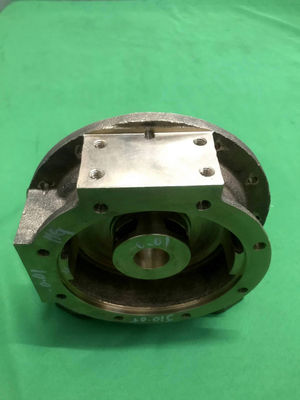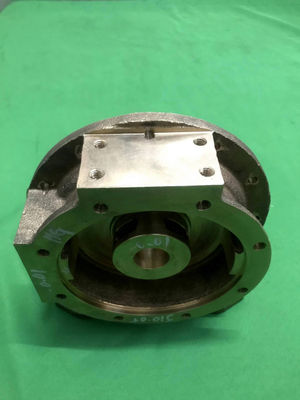
Contact me for free samples and coupons.
Whatsapp:0086 18588475571
Wechat: 0086 18588475571
Skype: sales10@aixton.com
If you have any concern, we provide 24-hour online help.
x| Small Orders | Accepted | Quality | ISO |
|---|---|---|---|
| Delivery | Quick Delivery | Application | Industrial |
| Shape | Customized | Advantage | High Precision |
| High Light | 10mm Customized Bracket Casting,15mm Bracket Casting High Precision,Casting cnc precision parts |
||
Customized High Precision Casting Precision Cast Parts Bracket
Precision cast parts are frequently used in the manufacturing of brackets. Brackets are structural components that provide support, attachment, or alignment for various objects or systems. They are commonly found in industries such as automotive, aerospace, construction, and electronics.
The process of manufacturing precision cast brackets typically involves the following steps:
-
Pattern Creation: A pattern is created based on the design specifications of the bracket. The pattern can be made from materials like wax, plastic, or metal and serves as an exact replica of the desired final shape and features.
-
Molding: The pattern is used to create a mold. The mold is typically made from a refractory material capable of withstanding high temperatures and pressures.
-
Wax Injection or Patterns Assembly: Wax patterns, created from the pattern, are either directly injected into the mold or assembled on a wax sprue to form a wax cluster. The sprue acts as a channel for the molten metal to flow into the mold.
-
Shell Building: The wax cluster or individual wax patterns are coated with a ceramic shell. This is achieved by dipping them into a ceramic slurry and then coating them with fine ceramic particles. The process is repeated multiple times to build up a strong and precise ceramic shell around the wax patterns.
-
Dewaxing: The ceramic shell, with the wax inside, is heated, causing the wax to melt and drain out. This leaves behind a hollow mold cavity in the shape of the bracket.
-
Casting: The hollow ceramic shell is preheated, and molten metal, such as aluminum, steel, or other suitable alloys, is poured into the mold cavity through the sprue.
-
Cooling and Solidification: The molten metal cools and solidifies inside the mold, taking the shape of the bracket.
-
Shell Removal: Once the metal has solidified, the ceramic shell is broken or removed from the cast bracket, revealing the final component.
-
Finishing: The cast bracket undergoes various finishing processes, such as grinding, machining, and surface treatment, to achieve the required dimensions, smoothness, and overall quality.
-
Quality Assurance: The finished bracket is carefully inspected for dimensional accuracy, surface defects, and other quality parameters to ensure it meets the required specifications.
The specific details of the manufacturing process may vary depending on the specific requirements, materials used, and the capabilities of the casting facility. However, precision casting provides the ability to produce brackets with complex shapes, intricate details, and high-quality finishes, making it a preferred method in various industries.
Specifications
1. Small Order Accepted
2. ISO certified.
3. Quick Delivery





